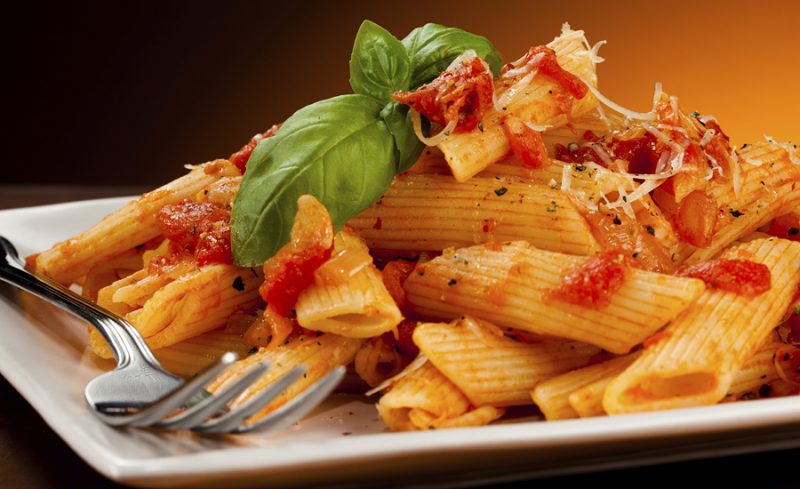Quick Answer: Pizza flour and bread flour are similar but not the same. Pizza flour typically has a lower protein content, making it ideal for a crispier crust. Bread flour, with higher protein, is better for chewy bread. Choose based on your desired result: crispy pizza or chewy bread.
Introduction
Hey there, fellow food enthusiasts! Today, I’m diving deep into the world of flour. You might wonder, “What’s the big deal about flour?” Well, my friends, it’s the fundamental ingredient behind some of the most beloved dishes in the culinary universe: pizza and bread.
Now, I won’t keep you long here in the intro, but I promise it’s going to be a doughy, delightful journey. We’re exploring the differences between pizza flour and bread flour, figuring out how each affects our beloved recipes, and uncovering whether you can swap them out when the pantry’s playing hard to get.
So, let’s get those ovens preheated, and prepare to knead, roll, and bake our way through the fascinating world of these flours.
Understanding Flour Types
Flour, my friends, is far from being a one-size-fits-all kind of ingredient. There’s a vast world of flours out there, each with its unique properties and quirks. In this section, we’re going to break down what sets pizza flour and bread flour apart in terms of their composition and characteristics.
The Composition of Pizza Flour
When it comes to crafting the perfect pizza, the flour you choose can make all the difference. Pizza flour is specially formulated to create that coveted crispy yet tender crust we all know and love. It typically has a higher protein content compared to other flours, usually around 12% to 14%. This higher protein content contributes to gluten development, which is essential for a good pizza crust.
The Composition of Bread Flour
On the flip side, bread flour is the go-to choice for achieving the perfect loaf of bread. It shares some similarities with pizza flour, boasting a high protein content, typically in the 10% to 11% range. This elevated protein level ensures the development of strong gluten networks, which are crucial for bread’s characteristic chewiness and structure.
Now, remember that these protein percentages can vary slightly between different brands and types of flours, so it’s always a good idea to check the packaging for specifics when you’re in the flour aisle.
How Each Flour Impacts Your Pizza and Bread Recipes
Now that we know a bit about what makes these flours tick, let’s explore how they work their magic in our favorite recipes.
Pizza Flour: What Makes it Ideal for Pizza Dough
Pizza flour, with its higher protein content, is your partner in crafting the perfect pizza crust. It helps develop a strong gluten structure, which translates to that classic chewy texture you get in a great pizza. The high protein content also allows for better oven spring, giving you those delightful bubbles and pockets in your crust.
Bread Flour: The Key Ingredient for Perfect Bread
Bread lovers, this one’s for you! Bread flour is designed to create the ideal structure for your loaves. Like pizza flour, its high protein content facilitates strong gluten development. This is what gives bread its fantastic chewiness and that wonderful airy crumb.
Can You Substitute Pizza Flour for Bread Flour (and Vice Versa)?
It’s time to tackle a question that’s been a source of culinary debate for years: Can you use pizza flour instead of bread flour or vice versa? Is it a floury game of Russian roulette or a clever kitchen hack? We’re about to find out.
When to Use Pizza Flour in Bread Recipes
If you find yourself out of bread flour but have some trusty pizza flour in your pantry, don’t fret. You can indeed use pizza flour to bake bread, but there are a few things to keep in mind. Pizza flour’s higher protein content may lead to a slightly chewier texture than you’d get with bread flour, but it’s not necessarily a deal-breaker. You can adjust the hydration levels in your recipe to achieve a softer crumb if needed.
When to Use Bread Flour in Pizza Recipes
On the flip side, if you’re attempting a pizza night and your bread flour is front and center, it’s entirely possible to make a delicious pizza with it. Just be prepared for a crust that’s a tad more bread-like than the typical Neapolitan style. Lower the hydration slightly, and you’ll be on the right track.
Suggesting the Best Flours for Pizza
Choosing the right flour for your pizza is crucial, and it can significantly impact the end result. In this section, I’ll provide my recommendations for the best flours to use when making pizza.
When aiming for that classic Neapolitan-style pizza with a thin, blistered crust, consider 00 flour. It’s finely ground and has a lower protein content, making it ideal for achieving a super-thin, tender crust.
For those of you who prefer a slightly heartier pizza with a bit more chew, all-purpose flour can do the trick. It strikes a balance between protein content and ease of handling, making it a versatile choice for various pizza styles.
Now, if you’re up for some experimentation and want a unique twist on your pizza, try whole wheat flour. It imparts a nutty flavor and added nutritional benefits to your crust. Just be mindful that it may result in a denser crust, so it’s excellent for those who appreciate a more rustic pizza.
Detailed Comparison Table – Pizza Flour vs. Bread Flour
In this table, we’ll directly compare the characteristics of pizza flour and bread flour, making it easier to understand the distinctions:
| Aspect | Pizza Flour | Bread Flour |
|---|---|---|
| Protein Content | 12-14% | 10-11% |
| Ideal for | Perfect Pizza | Excellent bread |
| Gluten Development | Strong | Strong |
| Crust Texture | Crispy, tender | Chewy |
| Bread Application | Not ideal | Ideal |
| Example | Caputo 00 Flour | King Arthur Bread Flour |
Tips for Achieving the Best Results with Pizza and Bread Flour
To master the art of baking with pizza and bread flour, there are a few essential tips that can make a world of difference. Let’s dive into these secrets of the trade:
Hydration Levels and Flour Selection
Balancing hydration levels: The amount of water you use in your recipes is crucial. For pizza dough, aim for a hydration level of around 60-65%. This ensures a workable, elastic dough that bakes into a crispy crust. In bread, slightly higher hydration (70-75%) can create that fantastic, airy crumb we adore.
Balancing Texture and Flavor in Your Pizza and Bread
- Flavorful fermentation: Both pizza and bread benefit from a slow, cold fermentation process. It allows for the development of complex flavors. For pizza, consider a 24-72 hour fridge rise, while bread dough can shine with a long, cool rise in the refrigerator.
- Don’t skimp on salt: Salt isn’t just for seasoning; it plays a crucial role in regulating fermentation. Be sure to include it in your recipes, typically around 2% of the flour weight.
- Experiment with flour types: Don’t hesitate to blend different flours for a unique flavor profile. Mixing whole wheat, rye, or other specialty flours can add depth to your dough.
The Role of Gluten Development in Pizza and Bread Making
Gluten, often seen as the star of the show when it comes to baking with these flours, plays a pivotal role in your culinary endeavors.
Gluten in Pizza Flour vs. Bread Flour
- Pizza flour’s gluten network is optimized for a crisp yet tender crust. It encourages the formation of those coveted bubbles and pockets during baking, giving your pizza its characteristic texture.
- In bread flour, the gluten network focuses on holding the structure of the loaf. It’s this structure that provides the chewy, open crumb of artisan bread.
Conclusion
In this flavorful journey, we’ve explored the world of pizza and bread flours, dissecting their characteristics and uses. Armed with this knowledge, you’re now ready to make the right flour choices for your culinary adventures. Don’t be afraid to experiment and create your unique recipes. As you embark on your cooking adventures, remember that the heart of cooking lies in exploration and sharing delicious moments. Happy baking!
Frequently Asked Questions (FAQs)
Is pizza flour the same as bread flour?
Pizza flour and bread flour share similarities, but they have distinct differences. Pizza flour typically has a higher protein content, making it ideal for crispy pizza crusts. Bread flour, on the other hand, is tailored for chewy bread. While you can use one for the other, the results may vary.
Can I substitute bread flour for pizza flour?
Yes, you can substitute bread flour for pizza flour and vice versa. Both flours have high protein content, but pizza flour is finer. Adjust hydration levels for best results.
Is pizza flour the same thing as bread flour?
Pizza flour and bread flour aren’t identical. Pizza flour has a finer texture and works well for crispy crusts. Bread flour is coarser and ideal for chewy bread.
What’s the main difference between pizza flour and bread flour?
The primary difference lies in the texture. Pizza flour yields crispy crusts, while bread flour gives you chewy bread. Both have high protein content.
Can I use all-purpose flour for both pizza and bread?
Yes, all-purpose flour works for both pizza and bread. It’s a versatile option, but the results may vary slightly in texture.
Does the brand of flour matter when baking pizza or bread?
The brand can impact the outcome. Experiment with different brands to find the one that suits your taste and style best.
How do I adjust the hydration level in my pizza or bread recipes?
To adjust hydration levels, add or reduce water until you reach the desired dough consistency. It varies with flour type, humidity, and personal preference.
Are there gluten-free alternatives for pizza and bread baking?
Yes, there are gluten-free flours like rice flour, almond flour, and tapioca flour. Experiment with different combinations for the best results.
What’s the role of fermentation in pizza and bread making?
Fermentation develops flavors and textures. A slow, cold rise, especially in bread, enhances the taste and structure.
Can I make gluten-free pizza or bread with alternative flours?
Certainly, you can make gluten-free pizza or bread with alternative flours. Explore options like almond or rice flour and experiment to find your favorite.


